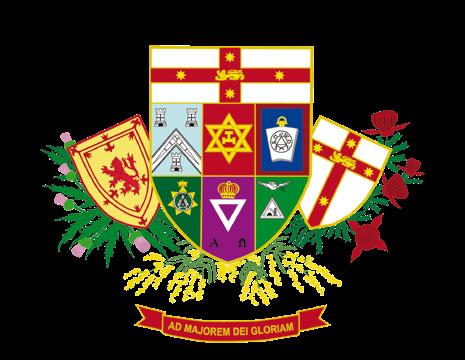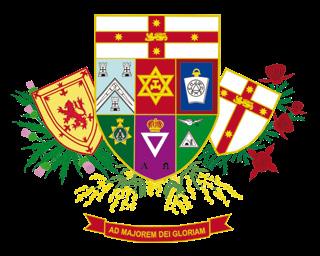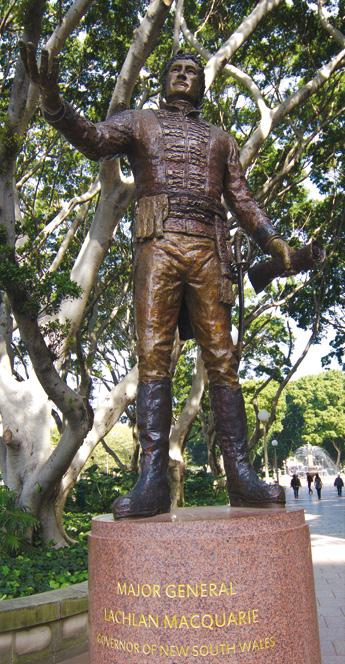
4 minute read
Associated Orders
A royal invitation
I have much pleasure, on behalf of Mark and Royal Arch Masons of NSW & ACT in inviting you to attend the
as the next First Grand Principal and Grand Master of our magnificent Order.
The installation of a new First Grand Principal and Grand Master is a highlight in the long history of Mark and Royal Arch Freemasonry in our state. This year’s Grand Installation promises to be no less an exciting occasion than previous Grand Installations being held at the Novotel Pacific Hotel in Manly, and the Grand Mark Installation to be held in the Egyptian Room in the Royal Arch Centre at Petersham.

You are invited!
To the installation of Deputy First Grand Principal and Grand Master Right Excellent Companion Robert Mitchell Drake.
10–13 September 2021
Full details at www.usgcnsw.org.au
The festivities commence with a reception for all attending on the Friday night, followed by the Royal Arch Grand Installation and banquet on the Saturday. Sunday is a leisure day affording the opportunity for taking a short trip to explore the World War II fortifications on North Head, or taking it easy on magnificent Manly Beach or beautiful Sydney Harbour.
The weekend will conclude on Monday morning with the installation of the new Grand Master of Mark Master Masons in our stunning heritage listed Egyptian Room. The Mark installation will be followed by a light lunch.
Robert, Penny, Bev and I all look forward to welcoming you to Sydney to share in this special event for Mark and Royal Arch Masons of NSW & ACT. John B Anderson First Grand Principal & Grand Master

Some Sydney sites
Many visitors to Sydney often walk past statues and other
memorials, pausing for a moment to look and then continuing their walk without any real idea of the history behind the statues.
For example, Macquarie Street presents a large part of ancient Sydney, almost from the days of its beginning.
Named after Major General Lachlan
Macquarie, Governor of NSW, the street was created at a time of great development in the city when banking was commenced, public buildings erected, streets named and the Blue Mountains crossed.
A walk along Macquarie Street, from the Opera House to Hyde Park, will introduce a large slice of Sydney history, including Parliament House, Il
Porcellino, the Mint Museum, Sydney
Hospital, the State Library, the William
Bland Centre and Queen’s Square.
Each has played a role in the creation of Sydney as the gateway to Australia and the centre of the nation’s commercial and tourist life.
In his book The Masonic Sites of
Sydney, the late RW Bro Grahame
Cumming found and explained many areas of interest which could attract visitors and locals alike.
For example, Macquarie Street has always been regarded as the equivalent to London’s Harley Street because of the many medical specialists who have rooms there.
So it was appropriate that the
William Bland Centre at No 229 is named after Dr William Bland, Sydney’s first full-time private medical practitioner.
Bland was born in London in 1789 and became a surgeon in the Royal
Navy. He mortally wounded the purser

Major-General Lachlan Macquarie monument at Hyde Park.
Photo courtesy of Maksym Kozlenko
of HMS Hesper in a duel at Bombay and having been tried, was sentenced to seven years transportation to NSW.
He reached Sydney in July 1814 and was sent as a convict surgeon to the mental asylum at Castle Hill. Bland was pardoned in 1815 by Governor Macquarie and established his private practice. But he was jailed in 1818 for ridiculing Macquarie and after release resumed his private practice.
He helped draft bills for the Constitution and in June 1843 was elected to the new representative government and later served in the Legislative Council. In 1859, he became the first president of the Australian Medical Association.
He was made a Mason in Sydney on 1 July 1822 in the Australian Social Lodge, No 260 Irish Constitution.
Another member of the Australian Social Lodge, Francis Greenway, who joined in June 1822, also left a permanent mark on Sydney after being convicted of forgery in 1814 and transported to the NSW colony.
At that time he was the only architect in Sydney and Governor Macquarie made good use of his talents in his building program.
Queens Square might just as well be called Greenway Square. In the pavement opposite the Law Courts is a plaque depicting Greenway and listing the buildings he designed. Among them are St James Church begun in 1819, next to it is the Supreme Court begun in 1820 and across the road is the Hyde Park Barracks, started in 1817. Greenway was also the first architect to submit a proposal to build a bridge across the harbour.
There were many outstanding colonists in Sydney, some of whom were Freemasons and a number of them have been remembered in stone, steel and statue.





